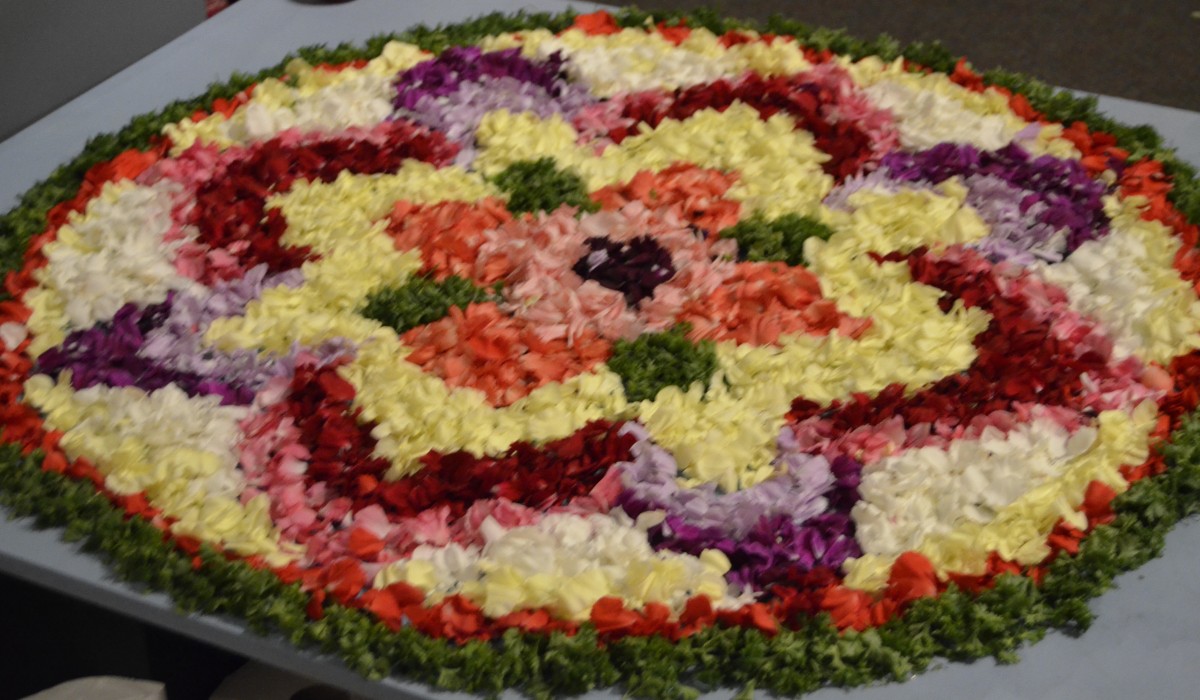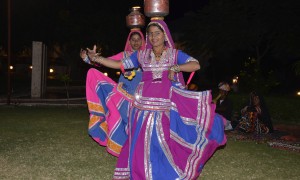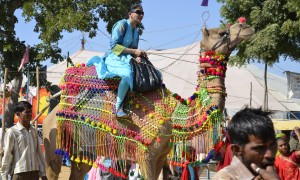Color exploded last week at the Sari Fashion Show and Rangoli demonstration at theSaugatuck Center for the Arts. The program was part of a month long Cultural Festival of India sponsored by this lively organization located on the western coast of Michigan. Last year they featured Japan and included a Kimono exhibit.
Rangoli is a traditional and colorful art form practiced in India. They are decorative designs created on floors of living rooms and courtyards during Hindu festivals and are meant as a welcome to the deities.
They are also meant to welcome guests.
Designs can be as simple as geometric shapes, deity impressions, flower and pedal shapes or be very elaborate. Materials are rice or powder, flower pedals, grains and other natural materials.
Artists expect to wash away the creation, symbolizing the temporal nature of life. There is no attachment to the work.
The other part of the festival that I attended was the Sari Fashion Show where over twenty garments were modeled and explained. While I was disappointed with the presentation (no thought given to back drop or images on monitors) the saris were beautiful and the explanations interesting.
India’s traditional national dress for women has withstood the test of time and is now over 5,000 years old.
I learned that the style of sari, the embroidery, the colors and even the way the 6-yard length of silk or cotton is draped signifies where the wearer is from. Each region has its own traditions.
The other thing I really liked is that women wear their wedding saris to all kinds of special occasions. They aren’t packed away in acid resistant boxes like our wedding gowns are, only to be brought out when the next generation plans a wedding. A woman can wear her wedding sari often at joyful celebrations.
As the moderator explained, “We love color and dance and food.” The Sari is all part of those traditions.














Comments
2 CommentsIndia: Country of Colors | DesignDestinations
Feb 13, 2012[…] constantly. I was mesmerized with the women wrapped in their silky sari’s. The flowers. The rangoli’s. The bright turbans telling so much about the […]
ArtPrize 2021 | DesignDestinations
Oct 1, 2021[…] These pieces are temporary. To be enjoyed and then washed away in the rain. This is like Rangoli in India. […]